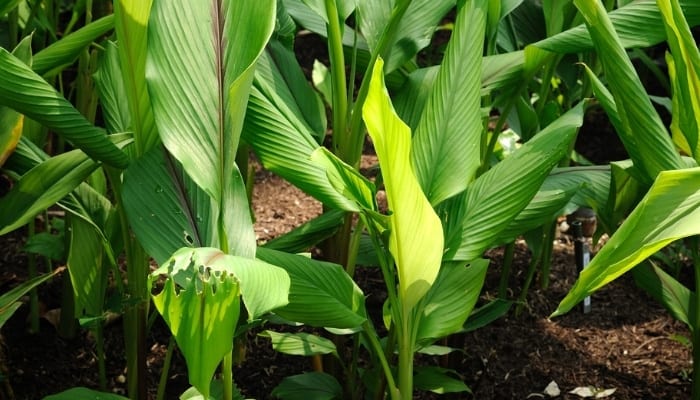Adding ginger to your garden is highly beneficial, especially when practicing companion planting. Ginger does not harm other plants, instead, it aids in their growth and health.
What can I plant with ginger? Some great ginger companion plants include garlic, beans, chili peppers, turmeric, leafy greens, bell peppers, and cilantro. Ideally, you’ll want a plant that has the same growing requirements as ginger. It’ll also be beneficial if the two plants complement each other.
In this article, we’ll go through some of the best companion plants to grow with ginger and the benefits of each. Read on to know more!
Ginger Companion Plants
Companion plants offer a mutual benefit. The great thing is that ginger is incredibly helpful to other plants because its pungent odor acts as a pest repellent.
Here are some of the best companion plants to grow with ginger:
1. Chili Peppers
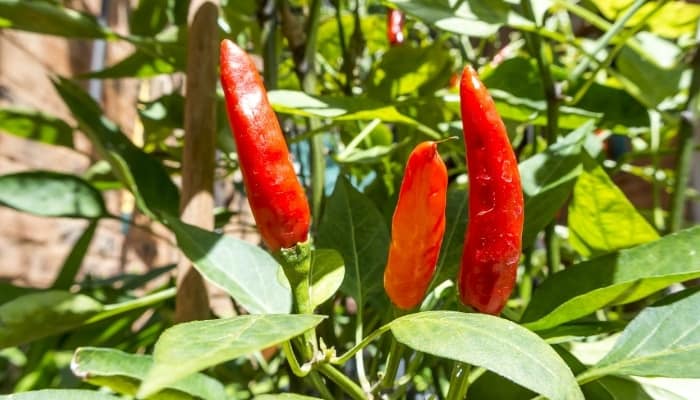
Chili pepper is relatively easy to grow. Its leaves thrive in the sun, while its roots prefer moist soil.
The two plants are mutually beneficial since chili peppers shade ginger, while ginger repels pests and also shades pepper roots.
- Benefits provided: Offers shade
- Mature size: 5 to 12 feet
- Popular varieties: Chinese chili, Capsicum annum, C. baccatum, and C. pubescens
2. Turmeric
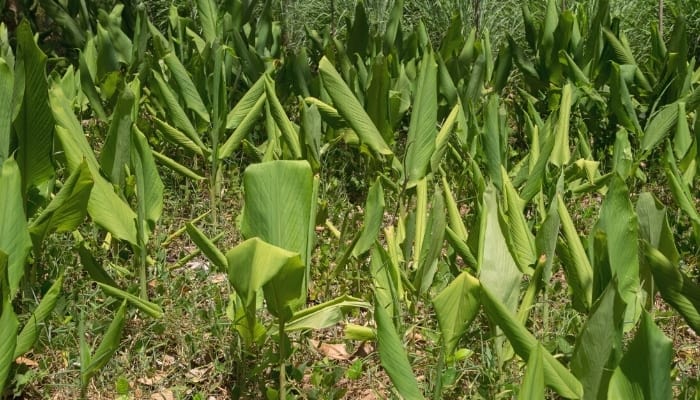
Like ginger, turmeric is a spicy root. Both plants have the same growth requirements. Turmeric and ginger greatly complement each other and amplify each other’s benefits.
- Benefits provided: Strengthens ginger’s benefits, great for planting in limited areas, needs the same soil type as ginger
- Mature size: Up to 3 to 4 feet
- Popular varieties: White turmeric and yellow turmeric
3. Peas
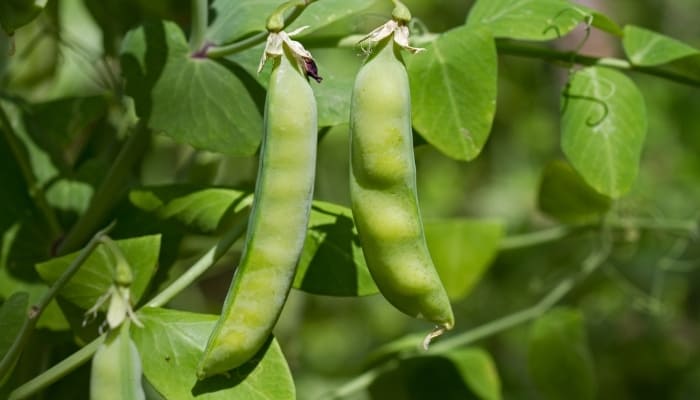
Peas are annual legumes. They’re delicious and healthy vegetables that you’ll definitely benefit from growing. Plus, they make a great companion plant for ginger.
They’re climbing plants, which means they’ll grow to whatever size you desire. All you need is to provide adequate support.
- Benefits provided: Enrich the soil with nutrients, provide shade
- Mature size: Bush peas can grow to 30 inches, while pole peas can grow as tall as 6 feet
- Popular varieties: Snap peas, snow peas, and pigeon peas
4. Beans
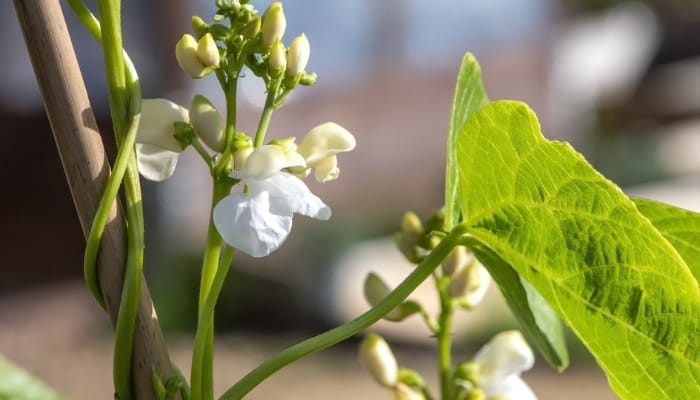
Like peas, beans are great legumes to grow. They’re known to fix nitrogen levels in the soil, making for awesome companion plants.
Beans have big leaves that will shade ginger against any harsh sun. You can also “customize” their size as they’re climbing plants.
- Benefits provided: Provide shade, regulate nitrogen levels in the soil
- Mature size: Anywhere from 2 to 13 feet
- Popular varieties: Lima, navy, pinto, and kidney
5. Cilantro
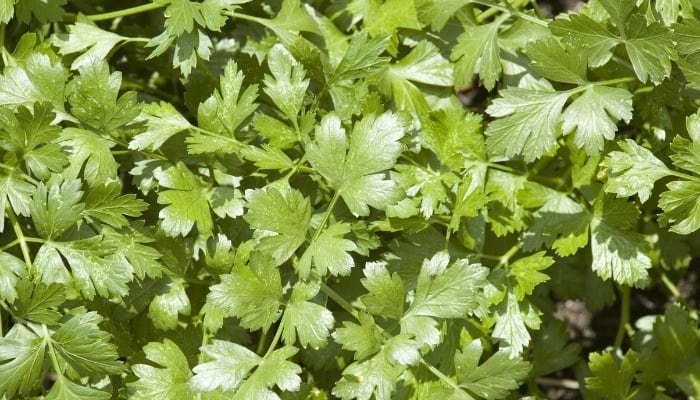
Cilantro, along with ginger, is a popular ingredient in many dishes.
Better yet, it doesn’t require a lot of special care. It has different varieties, each with its distinct taste. In addition, its white flowers can brighten up any garden.
- Benefits provided: Provides shade, easy to grow
- Mature size: Up to 2 feet
- Popular varieties: Culantro, leaf cilantro, and Mexican coriander
6. Garlic
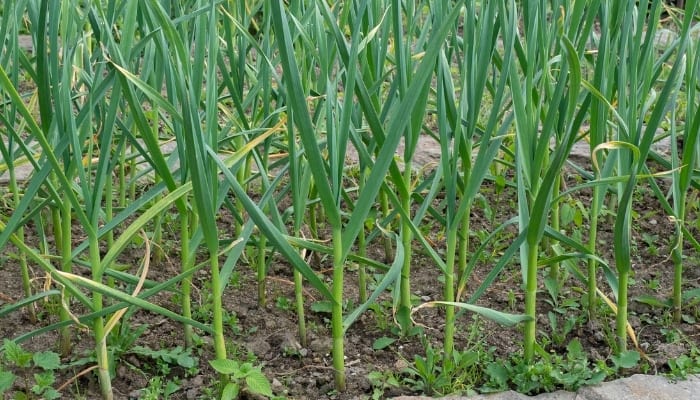
Garlic doesn’t take up much space in your garden. It’s also highly compatible with ginger.
Plus, they both work well together in countless recipes, so it makes sense to grow them next to each other!
- Benefits provided: Repels many pests and fungal diseases, enhances ginger’s aroma
- Mature size: 1 to 3 feet
- Popular varieties: Soft neck garlic and hard neck garlic
7. Bell Peppers
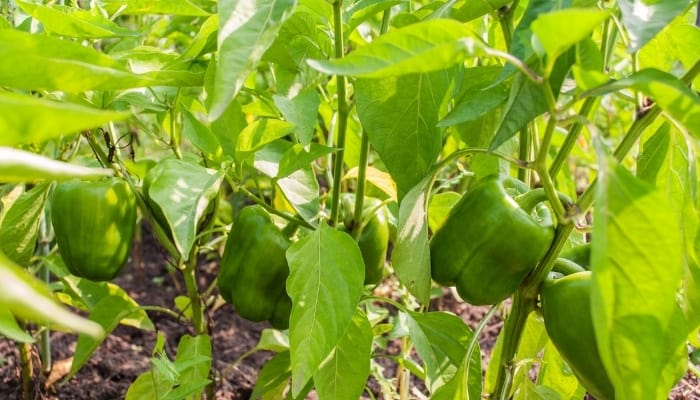
Bell peppers are garden essentials. Plus, planting them next to ginger is a fool-proof way to ensure both plants flourish.
They’re highly similar to chili peppers. So, if you want a tasty but less spicy vegetable, bell peppers are the way to go.
- Benefits provided: Provide shade, compliment the taste of ginger
- Mature size: 3 to 6 feet in height
- Popular varieties: California Wonder, Baron, and Candy apple
8. Lemongrass
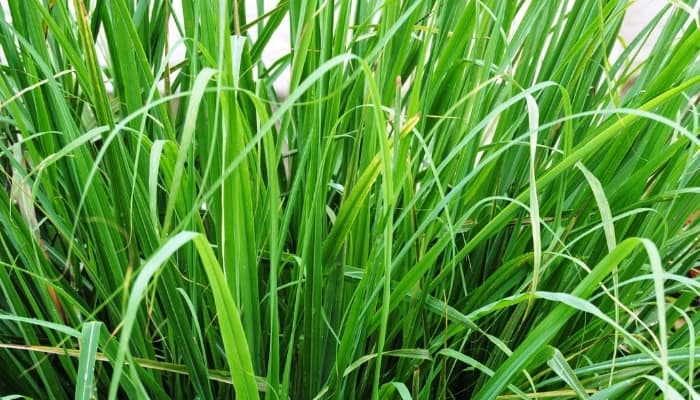
Lemongrass is a great herb to use in soups and all seafood dishes. So, it’s no wonder how complementary and useful it is to grow next to ginger.
- Benefits provided: Provides shade, has the same growing requirements as ginger
- Mature size: Up to 5 feet tall and 2 feet wide
- Popular varieties: Ornamental lemongrass and Indian lemongrass
9. Nasturtiums
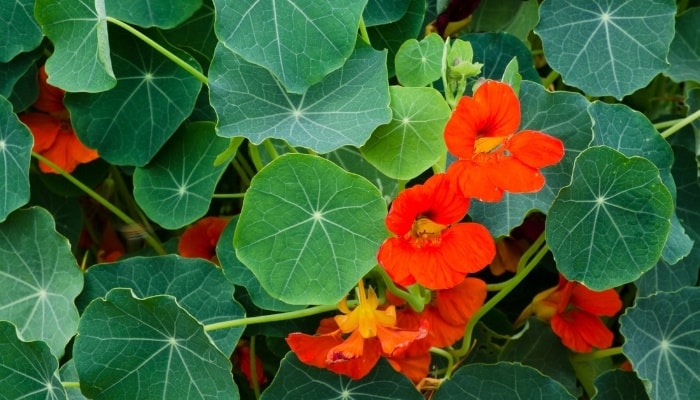
Nasturtiums make excellent companion plants. They look great in your garden while aiding the growth of plants next to them.
Nasturtiums are ground cover plants that can trap any insects that might be harmful to your garden.
- Benefits provided: Provide shade, protect companion plants from insects
- Mature size: Up to 1 to 3 feet tall, almost 18 inches wide
- Popular varieties: Whirlybird and Monk’s Cress
10. Leafy Greens
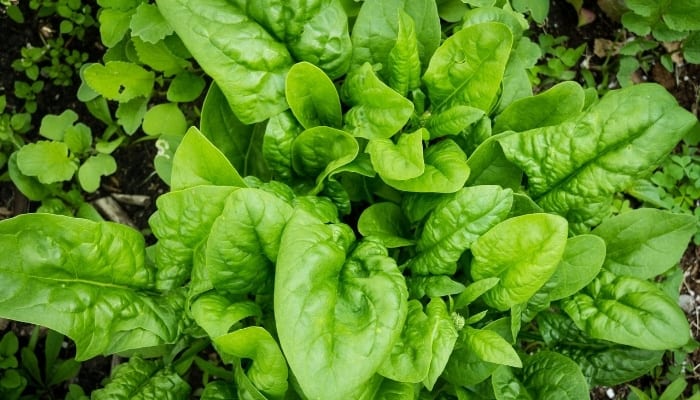
Leafy greens are essential in every garden, not to mention that they’re a breeze to grow.
In addition, pests love to feed on leafy greens. So, planting them next to ginger offers a good level of protection. Not only that, but leafy greens also take little space in your garden.
- Benefits provided: Provide shade, enrich the soil with nutrients, protect nearby plants from pests
- Mature size: No more than 12 inches tall
- Popular varieties: Kale, spinach, and lettuce
11. Hibiscus
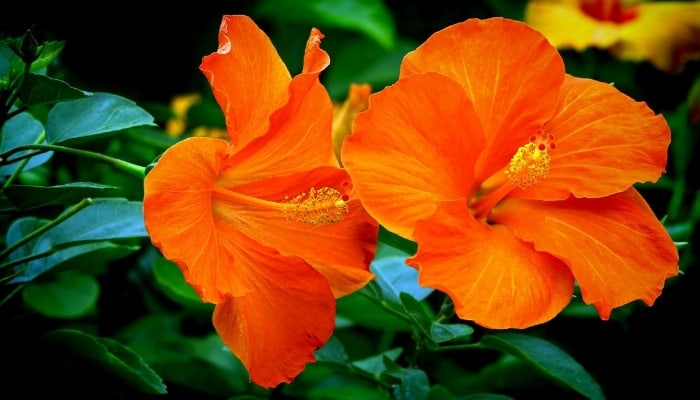
Not only is hibiscus a vibrant addition to your garden, but the plant is also an excellent medicinal supplement. It can grow as a companion to many other plants, including ginger.
You can’t go wrong with a hibiscus shrub. It attracts a lot of beautiful butterflies to your garden, making it a sight to behold.
- Benefits provided: Provides shade, brings color to your yard
- Mature size: From 3 to 7 feet tall
- Popular varieties: Tropical hibiscus, Rose Mallow, and hardy hibiscus
12. Fruit Trees
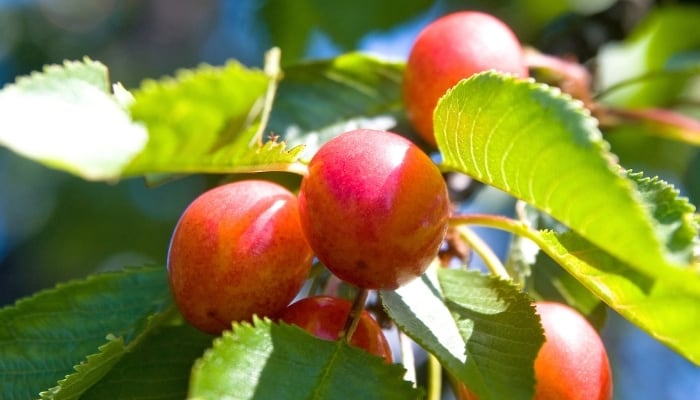
Who doesn’t want to have fruit growing in their garden? Not only will fruit trees give you that, but they can also be great companion plants for ginger.
These shady canopies can take up a lot of space, so you’ll definitely benefit by planting ginger next to them to utilize the free root space.
- Benefits provided: Provide partial shade
- Mature size: Up to 25 feet tall
- Popular varieties: Apple, lemon, cherry, and fig trees
How To Plant Ginger Root
Another great thing about ginger is how easy it is to plant. You don’t even need to purchase special seeds as you can use ginger cuttings from your pantry.
However, purchasing high-quality ginger from a seeding company guarantees a fresh disease-free plant.
Ginger is a tropical plant that will flourish in warm, humid weather. Planting it around spring would be ideal.
Once the weather is right and you have your ginger cuttings, you can start planting:
- Soak the cuttings for 24 hours until the eyes sprout a pale small green stalk.
- Make sure your soil is fertile by adding fertilizer or organic compost. You can also grow ginger next to nutrient-providing plants.
- Ensure the soil is well drained before planting the ginger root to avoid drowning it.
- Regularly water the ginger, and never let the soil dry.
- When it’s fall, harvest your ginger. Pry it using a gardening fork by digging outside its planting radius to avoid piercing the root.
- Dry the ginger on a towel or cooling rack.
- Store it, and enjoy it later.
Related Questions:
What Are the Best Conditions for Ginger Root To Grow?
Ginger root thrives in moist and humid soil. It also requires plenty of indirect light but needs to be protected from the harsh afternoon sun.
When Do You Harvest Ginger?
Ginger is usually harvested after about 10 months from sprouting.
You’ll notice its leaves yellowing and drying and the stem falling over. This means the root is firm and ready for harvest.
Closing Thoughts
Planting ginger is a great way to use up any free space in your garden. It benefits all neighboring plants, not to mention it’s fairly easy to grow.
You might consider growing some ginger companion plants. This way, the two plants will mutually benefit each other and save you a lot of work and time.

